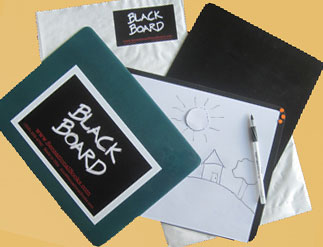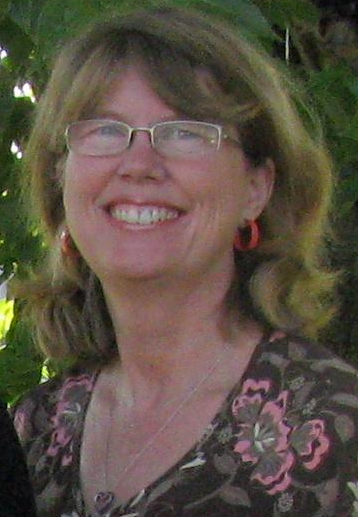The poison bottle stands on a shelf above my desk. Sometimes I pause in my work, lift it down, and turn it in my hands. It is about three inches tall and made of clear glass–before I wrote that statement I checked with my sighted daughter, just to be sure. Unlike an ordinary bottle, it is flat on one side, as though it were meant to stand flush against a wall. The flat side is perfectly smooth, but the rounded side is scored with distinct, vertical ridges from top to bottom.
I bought the poison bottle in a little antique shop in California. The place was crammed floor to ceiling with odd bits from bygone years, and to my delight, nothing was hidden behind glass. The shopkeeper was talking to another customer, and I hoped he was too busy to notice me as I feasted upon the tactile cacophony. I made a fresh discovery everywhere I reached–a wind-up doll, a carpet sweeper, a pile of carved picture frames, a clothes wringer, an assortment of buggy wheels and harness parts.
“Are you looking for something?”
The shopkeeper had seen me after all. My hands dropped to my sides, and I braced myself for the inevitable admonition. Gentle or stern, it would mean the same thing: “Please don’t touch.”
“You have such interesting things here,” I said, trying to distract him. “It must be fun to collect them all.”
He hesitated. I didn’t breathe. “Come with me,” he said. “I want to show you something.”
I followed his footsteps down a narrow aisle, brushing past shelves to right and left, and heard him move some cartons aside. “They made these in the 1850s, before electric lights came in,” the shopkeeper said, placing the poison bottle in my hand. “If you got up in the night to take your medicine, you probably didn’t bother to light a lantern. You did everything by touch. Chances are you didn’t have much shelf space, so your rat poison might be right next to your concoction for headaches. Poison bottles were designed so you could distinguish them in the dark, with your hands.”
After I bought the poison bottle, I tried to think of objects in general use today that are specifically made with touch in mind. My list was pitifully brief. Computer keyboards have a raised dot on the f and j keys to help the user position his/her hands without looking, and the 5 on a telephone keypad is also marked with a dot. It seems a paltry concession to the hand, compared to the myriad appliances and devices that cater to vision. Colorful packaging; sleek, buttonless screens; and the dazzling graphics of webpages all testify to the primacy of sight. The hand–despite its capacity to gauge size and weight, texture, shape, and detail–has been rendered nearly superfluous as a means of perception.
As a blind child, I was blessed with parents who understood that touch was my portal to knowledge. When I was three or four, my mother showed me split-rail fences, mailboxes, fire hydrants, lawn chairs, birdbaths, and telephone poles. My father took me for walks in the woods and showed me acorns, mushrooms, and the footprints of rabbits and raccoons. Together we explored the construction sites in our suburban development. In half-finished houses I learned that doors and windows fit into frames and discovered that bathroom pipes descend through holes in the flooring. My hands gave me a vast repertoire of information that has endured and expanded throughout my life.
The desire to touch was not unique to me as a blind child. All children have a hunger to touch the objects in their environment. In fact, the eagerness to touch motivates most early movement. When Baby Sarah spots a bright pink rattle across the room, she is not content to lie on the carpet and admire it from afar. She wriggles forward, focused and determined, until the rattle is in her grasp. Now she is free to learn about all its properties. She rubs it and pats it, feeling its hardness and its smooth, rounded shape. She shakes it and listens to ms mysterious clattering sound. She puts the handle into her mouth and explores it with her tongue and gums. Her hands bring the rattle close and give her an intimate knowledge that she would miss if she only viewed the object from a distance.
Nevertheless, touch is highly subject to regulation, and the rules go into effect by the time a child is old enough to walk. “Don’t touch the Christmas ornaments–you’ll break them!” “Don’t touch Mommy’s scissors–you’ll get hurt!” “Keep your hands to yourself–that doesn’t belong to you!” “Just look at it. Don’t touch! Don’t touch!” The richness of tactile experience is forfeited, and touch becomes suspect. It is the terrain of infants, deviants, and thieves. Vision–so safe and clean–reigns unchallenged.
As early as Old Testament mythology, touch was cast as a dangerous and forbidden sense. In the story of the Garden of Eden, Eve reports to the serpent: “But of the tree which is in the midst of the garden, God hath said, Ye shall not eat of it, neither shall ye touch it, lest ye die.” Eve ignored God’s “look, don’t touch” mandate, and as a result, humankind has suffered to this day.
Despite Biblical sanctions, or perhaps in reaction against them, touch came into its own during the European Renaissance. Touch was considered the master sense, able to verify and expand upon characteristics only superficially perceived through sight. Benedetto Varchi, a sixteenth-century Florentine historian, claimed that the sculptor’s art could best be appreciated by touch. In the eighteenth century the German philosopher Johann Gottfried Herder praised the value of touch over sight, which he dismissed as “a superficial sense which can only render the surfaces and colors of objects.” *1 Perhaps the most remarkable manifestation of this enlightened attitude toward touch is the eighteenth-century museum.
For me, a visit to a museum is a series of encounters with velvet ropes, wooden barricades, ever-vigilant security guards, automatic alarm systems, and implacable sheets of glass. Whether African wood carvings, specimens of shells and minerals, Native American artifacts, or figures cast in bronze are on display, no enjoyment or understanding through touch is permitted. In contrast, visitors to the museums of eighteenth-century Europe were not only allowed, but encouraged to touch the items on exhibit. In 1694 a visitor to the Ashmolean Museum at Oxford University described handling a variety of exotic objects, including a lodestone and a cane “which looks like a solid heavy thing but if you take it in your hands [is] as light as a feather.” *2 According to Constance Classen, a researcher on historical attitudes toward the senses, “Museum visitors, as polite guests, were expected to show their interest and goodwill by asking questions and by touching the proffered objects. To be invited to peruse a collection of exotic artefacts or “objets d’art” and I not touch anything would be like being invited to someone’s home for dinner and not touching the food.”
By the middle of the nineteenth century, however, the museum had become an altogether different place. No longer were visitors the personally invited guests of the owner or management. Museums had opened their doors to the general public, and there was mounting concern for the safety of the objects they housed. Visitors were required to stand back and view the exhibits from a distance. To touch a precious object was considered disrespectful and potentially damaging.
This change in the museum reflects the social transformation that Classen calls “the rise of visualism.” Unauthorized touch caused anxiety to an emerging middle class that had goods to protect from theft and breakage. An obsessive fear of dirt sprang from the new understanding that invisible germs caused sickness. The hands carried treacherous bacteria from one person to another; to touch an object that others had handled was to invite some dire disease. Furthermore, Victorian prudery and Freud’s obsession with all things sexual welded the connection between touch and something that “nice people” shouldn’t do.
By the beginning of the twentieth century, touch was closely identified with the poor and unwashed, whose overcrowded slum dwellings swarmed with vermin and vice. A book on etiquette contained a whole chapter on avoiding the touch of “undesirables.” Readers were advised to stay away from “slums, local trains and streetcars, third-class pubs, cheap seats at movie theatres, and crowds or celebrations in the streets.”
Technology helped the middle and upper classes escape the contamination of touch that they had come to dread. Improvements in lighting made visual observation more effective at home and in the wider community. The greater availability of glass, and later the development of clear plastic, shielded merchandise from touch while it remained fully accessible to the eyes. In the United States, window shopping replaced the trip to the market, with its open bins of vegetables, hardware, and dry goods.
The trend that began with our Victorian forebears is amplified in today’s technological frenzy. Any facet of the world can leap into focus on the computer screen. From the safety of one’s own living room, one can now explore a Maori village, examine the world of a coral reef, or study the fine points of a Classical Greek vase. The only need for the hand is to click the buttons on a mouse. In the virtual world it is possible to build a house without lifting a hammer or to dissect a cadaver without ever wielding a scalpel. Touch is precluded by the onslaught of visual information.
For blind computer users, a number of clever programs convert the text on the screen into human-like speech. Yet no digital genius has found an effective way to bring a third dimension to the screen. To my hands it remains lifeless. My fingers find no aesthetic delights, no maps or diagrams, no images of objects ordinary or extraordinary.
Beside the poison bottle on the shelf above my desk lies a polished stone. A friend brought it to me from Bryce Canyon in Utah. Like the poison bottle, it is flat on one side and rounded on the other. The rounded side, nearly a perfect oval, is burnished to gleaming smoothness, a miracle to my touch.
I turn the stone over, flat side uppermost. Chiseled into the surface are a palm and five slender fingers. Perhaps the carving was made by a talented machine with a blade that knew its way from pinkie to thumb. But I like to imagine that it is the work of an artist who used real tools upon this real stone, and with the power of touch, created a tribute to the hand.
















